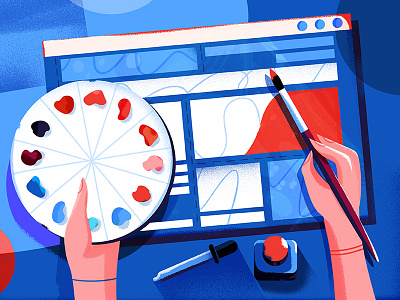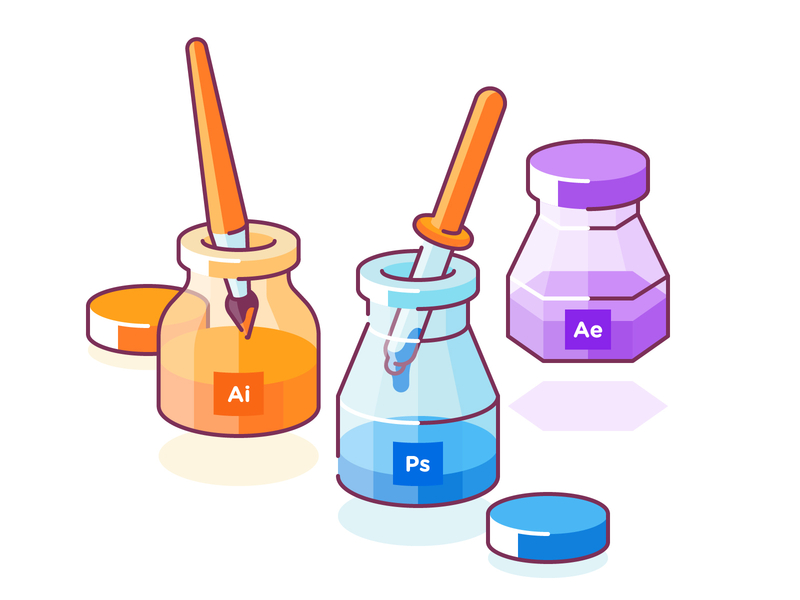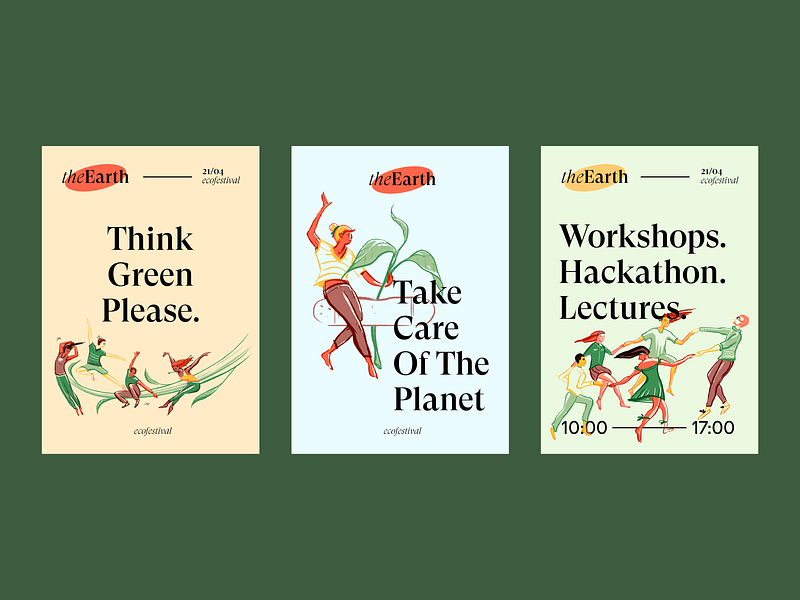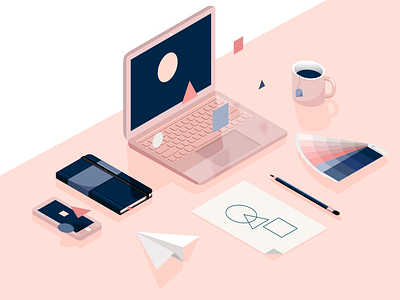What does a graphic designer do in 2021? Simply put, the job of a graphic designer revolves around visual storytelling. Graphic designers combine aspects of art, marketing, and technology to create visuals that entice or inform consumers.
What a graphic designer does on a day to day basis depends largely on the industry in which they work. However, their underlying skill sets are similar. In this article, we’ll explore the skills needed to become a graphic designer, the main tools they use, the types of projects graphic designers work on, and more. Let’s go!
Skills Graphic Designers Need
Graphic designers need a broad range of skills. The most basic of these is a thorough understanding of the principles of design, mastery of typography, and a strong understanding of color theory. And, of course, graphic designers should have strong creative skills.
Beyond design skills, graphic designers also need to have a variety of other skills. Project management is chief among those, as many design projects will not have a dedicated project manager. They should also have strong organizational and time management skills, and skills around communication and collaboration.
Graphic designers can learn the basic skills they need through reading books and articles, following tutorials, and more formal graphic design classes or bootcamps. The best way to really master the skills, though, is to practice them.
Software Graphic Designers Use
Originally, graphic designers created their work on drawing tables with x-acto knives, paper design elements, and rubber cement. Then the computer came along, making the process more flexible and faster (and less smelly).
Graphic designers use a variety of software for tasks—from photo editing to digital illustration to page layout. For years, the Adobe suite of products was the gold standard in graphic design, but in recent years alternatives have become more widely available.
If you’re just starting out in graphic design, take time to try different programs to see which ones suit your needs and work style best. Choosing programs that work together seamlessly (such as Adobe Photoshop and Adobe Illustrator) can make your workflow smoother if that’s a priority for you.
Types of Graphic Design Projects
Graphic designers in various industries might work on a variety of different projects from logos, to magazine covers, and even things like bus wraps. They may also contribute to website designs by editing photos, creating illustrations, or designing icons (though these tasks are also done by visual designers and web designers).
Here’s a brief rundown of the main types of projects graphic designers work on :
- Logo Design & Brand Identity
- Book & Magazine Covers
- Posters, Flyers, & Brochures
- Product Packaging
- Social Media Graphics
- Website Design
- Marketing Materials
- Digital Illustrations
- Advertisements
- Slide Deck Presentations
- Infographics
- T-Shirt Designs
Some graphic designers are generalists—they work on a variety of projects based on what their company or client needs at the time. Others specialize in one particular type of graphic design, such as book layouts or poster designs. In general, specialists will be able to command higher fees than generalists, especially if they grow a reputation as an expert in their chosen specialty.
Working with Clients
Many graphic designers work directly with clients. This is true whether the designer is working on an in-house design team or with external clients. Think of whoever you’re designing for as your “client,” whether they’re someone from another company or your own company’s marketing director.
You’ll work with clients to define the scope of a project, figure out what their target customer needs and wants, and to gather feedback at various stages along the design process.
For designer Radostina Georgieva, client communication is crucial to the success of any design project:
“My process always starts with a discussion around the goals of a project and the expected results. I try to listen carefully and collect all the information I need from the client. Once I get a good idea of the brief, I start doing more research and collecting images and keywords that might help me come up with interesting ideas and metaphors. All of this ends up in a doc that I present and discuss with clients.” — Radostina Georgieva, Independent Designer
Basic Workflow
Graphic designers generally start by figuring out the scope and requirements of a project during the discovery phase. That’s done through conversations with the client or other stakeholders, as well as research into things like who the audience is and what the competition has done.
From there, graphic designers use a variety of software to create design mockups that meet the client’s needs. These mockups will include the typography, color palettes, images (often still watermarked if stock images are being used), and the basic layout.
Designers gather feedback on those designs from stakeholders before creating finalized versions. If stock images are being used, they won’t be purchased until after they’re approved within the design.
Once the designs are approved, final versions that meet the project’s specifications (including any technical requirements from printers or product manufacturers) will be created. They then go through a final proofing process to make sure that there are no typos or other errors in the design before being printed or published.
Career Options for Graphic Designers
While “graphic designer” is a common job title, there are other titles graphic designers may take on. Some of these are specialties within graphic design, such as Brand Designer or Packaging Designer, while others are commonly more senior positions graphic designers may be promoted into, such as Art Director or Creative Director.
Graphic designers may work on an in-house design team, creating designs for a single company. These types of positions can be an excellent way for new designers to gain experience alongside more experienced pros.
They might also work at an agency, creating designs for a variety of clients. Agency jobs are another excellent opportunity for new designers to gain experience.
Finally, graphic designers may work as freelancers. While some new designers strike out as freelancers without agency or in-house design team experience, it’s more challenging to do so. Even a year or two of experience working with a team of more seasoned pros can make a huge difference in a designer’s skill level.
Regardless of the career path a designer chooses, and whether they specialize or are a generalist, constant improvement of skills and continuing education (formal or informal) is vital to success. Graphic designers who want to build a solid skillset and reputation in the design industry will need to continually strive for improvement.
Ready to launch your graphic design career? Learn how to become a self-taught graphic designer in 2021. Or, browse Graphic Design Jobs on Dribbble’s Job Board. ■
![]() About the Author — Cameron Chapman: Editor. Blogger. Author. Designer. Copywriter. Marketer. Entrepreneur. Speaker. Consultant. Coach. I wear a lot of hats. What most of them have in common, though, is storytelling.
About the Author — Cameron Chapman: Editor. Blogger. Author. Designer. Copywriter. Marketer. Entrepreneur. Speaker. Consultant. Coach. I wear a lot of hats. What most of them have in common, though, is storytelling.
Find more Process stories on our blog Courtside. Have a suggestion? Contact stories@dribbble.com.













